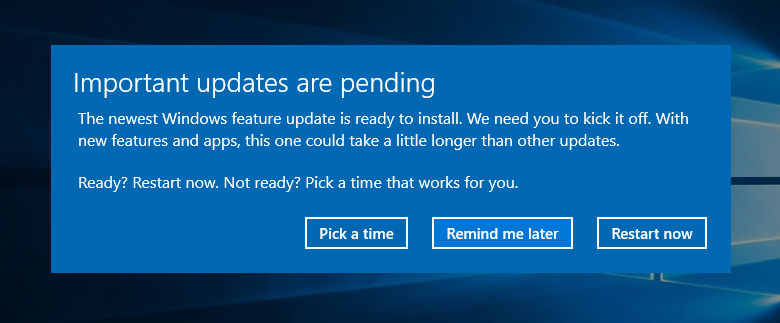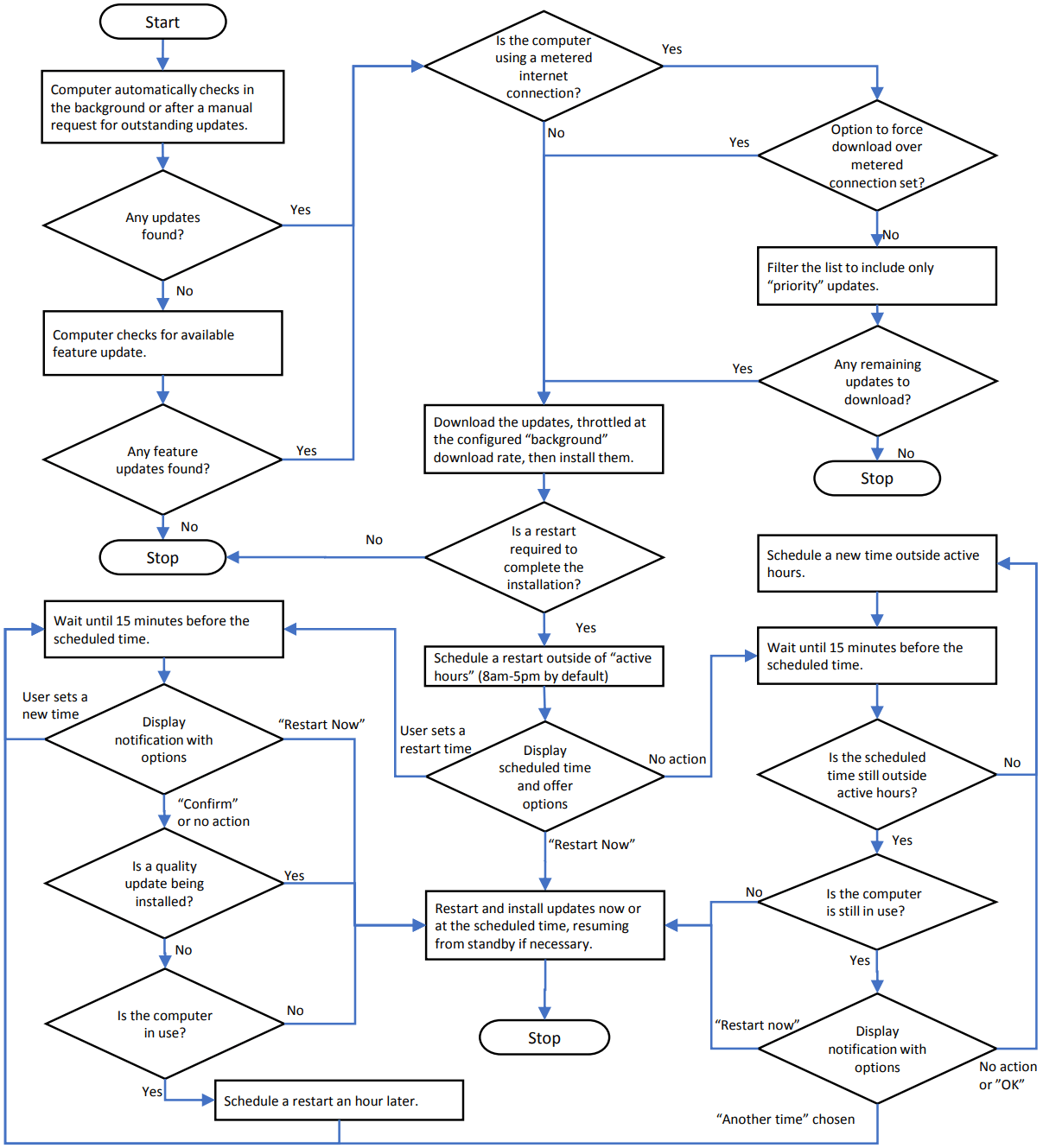Scientists have identified the drawbacks of the Windows Update interface, which is partially designed for "stupid users"

Scientists from University College London surveyed 93 respondents and found that the majority of Windows 10 users hate the forced update of the operating system. Researchers believe that there are several reasons for this, including:
- insufficiently developed interface of the operating system, which poorly informs users about the options for applying patches and reloads;
- inadequate embedded tools.
The authors of the scientific work carefully analyzed the mechanism of Windows Update and identified its weak points in terms of user interaction.
They made up a detailed flowchart of how Windows Update works (a full-size version opens from the link ).
')

The findings of scientists are quite simple: users need more information about updates and more control over when they occur. In any case, Microsoft should never force restart the computer to install the update if the system is in active use. While the interviewed users ultimately speak in favor of the fact that the updates are still important, the authors came to the conclusion that Windows doesn’t give them a good idea of what specific update it installs (security fix or feature update) and that how long does the procedure take.
Some of the shortcomings noted in the study are self-corrected by Windows. For example, in beta versions of Windows 10 that precede a future update in April 2019, an icon has already appeared on the taskbar, clearly indicating the need for an update.
A survey of users has shown that UX and UI systems clearly need improvements. For example, only 28% of respondents are generally aware of the Active Hours feature, which allows you to set the time during which updates will not be installed.
Perhaps the biggest problem is that much more detailed options for managing updates are present in the “professional” version of Windows 10 Pro, but for its purchase, users of Windows 10 Home need to pay $ 99, which many do not. As a result, the latter are deprived of some useful options, such as the ability to delay the update for 30 days.

These advanced Windows Update options are available in Windows 10 Pro, but not in Windows 10 Home
The authors of scientific work raise a fundamental problem that OS developers specifically sacrifice usability for the sake of security. Instant application of security patches with OS reboot provides maximum system protection. But for this, too much has to be sacrificed, because user discontent is too great.
“It is important to note that the system works regardless of the user's working context,” the document says. - The result - the most secure system, but which prevents the implementation of the main task. We assume that the update model in Windows 10 Home Edition is closer to the end of this spectrum [the automation spectrum is shown in the diagram below]. ”

The range of approaches to automate security systems
The diagram shows different options for automation when a user is excluded from the decision making process. Such automation also comes in many forms: from the application of universal rules for all users to the possibility of flexible configuration. Scientists call universal rules on the left side the “stupid user approach” approach, when all updates are installed automatically and as quickly as possible.
Although Windows 10 is closer to the right side of the spectrum, it’s still not without drawbacks from the left side, the researchers believe. Especially the version for home users (Home Edition), where the ability to disable automatic updates is disabled. This version downloads and installs updates as soon as possible and plans an automatic restart within the next 24 hours. The user is notified of a scheduled reboot, but cannot cancel it. “Since the operating system provides a runtime environment for many applications, restarting the system can disrupt other running applications and result in loss of unsaved work,” the authors write. They believe that such a forced reboot should be avoided if the system is in active use.
Source: https://habr.com/ru/post/441980/
All Articles